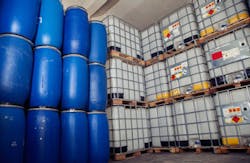Research aims to improve data on human exposure to chemicals
Safety data is lacking for many chemicals that are already in widespread use. But new research aims to help fill in the gaps in our knowledge about whether these substances cause health problems.
John F. Wambaugh and colleagues pointed out that the risks to human health of any given substance depend primarily on two factors: the potential hazards a chemical presents, and how much of it people are exposed to. Yet for many substances there is a lack of public data on these variables, and that limits the understanding of health risks.
According to the American Chemical Society (ACS), about 80,000 chemicals are registered in the United States under the Toxic Substances Control Act, and industry adds 700 to 1,000 new chemicals every year. Directly measuring the degree to which people are exposed to tens of thousands of chemicals would be a huge and time-consuming undertaking.
Instead, the researchers wanted to come up with a more practical approach that could be used to determine potential human exposure for the thousands of chemicals with little or no such data.
The solution? They have developed a mathematical model which can be used to predict which household and industrial chemicals people are exposed to the most. It is based on the answers to five simple questions about the substances, such as whether they are used in consumer products or whether they are pesticides.
The team have already used this approach to rank nearly 8,000 chemicals, from highest potential exposure level to lowest. In addition to familiar compounds such as DEHP, the top 10 included substances that scientists know very little about.
The researchers believe that their work could help prioritize future efforts that aim to understand potential health risks of thousands of chemicals, the ACS reported.
Details of the study have been published in the ACS journal Environmental Science & Technology.
